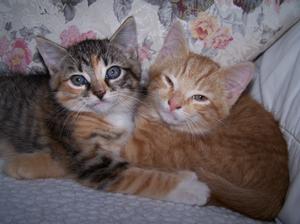Lawns Part I: The Undeclared War - The Chemical Battle
Lawns are an emblematic symbol in much of North America. But the traditional lawn has become a controversial topic. Mounting evidence indicates synthetic chemicals are dangerous. The province of Quebec in Canada has implemented sweeping legislation banning the use of many of these chemicals. Some towns in the United States have banned the use of certain lawn chemicals while many more are considering such legislation. The time is now to look at some sensible alternatives in this: the undeclared war on Mother Nature.
I’ve heard such phrases as, “They have the perfect lawn” and “His lawn is like a golf course!” These statements are most often euphemisms for a chemically induced monoculture. When a single species inhabits an area it is defined as a “monoculture”. Monocultures do not exist naturally; that is, one species does not live in isolation at the exclusion and expense of all others. The laws of nature see to it that interactive communities of plants and creatures live in healthy balance. A balanced community is an ecosystem, each interdependent member providing an integrated task in the interwoven fabric of life. Even savannahs, grasslands and prairies are complex networks of ecosystems. The “perfect lawn” is, therefore, an unnatural phenomenon; it is an anathema created by man, one contrary to natural law.
Healthy soils teem with life. The flora and fauna inhabiting soil communities composed of all manner of tiny insects, bacteria and fungi breaks down decaying matter turning the refuse into soluble nutrients upon which plants rely. Dying plant debris and expired soil inhabitants provide the fodder that feeds the microscopic creatures thus completing a richly complex and compelling cycle of life. Chemical fertilizers, pesticides and herbicides disrupt the interdependent balance that naturally occurs in these remarkable ecosystems. Repeated use of toxic substances degrades multitudes of subterranean communities that would be normally packed into every tablespoon of healthy soil.
Re-applications of chemicals also reduce earthworm populations. These elegant creatures ingest huge amounts of detritus and turn it into one of the most nutrient rich manures (“castings”) in the world. Interestingly, castings harbor disease-preventing properties. Earthworms tunnel deep into the ground, loosening and oxygenating the soil which is also a necessary component of soil and plant health. These extraordinary beasts become fewer as more chemicals are poured into the soil. Soils then become increasingly compacted and incompatible for healthy root growth. If you don’t have happy roots you don’t have healthy plants, plain and simple.
Pesticides and herbicides gradually impoverish soils that were once teeming with life. As more components of soil communities are destroyed the system becomes increasingly dysfunctional. Fewer nutrients are made available to plants making them more chemically dependent. Lawn grasses, therefore, become evermore needful of synthetic fertilizer fixes as an addict requires frequently administered doses of the drug to which he has become habituated. And with no natural defenses in place and no beneficial insects, fungi and bacteria to ward off pest problems your lawns actually become more susceptible to predation by disease and marauders. Your lawns are one missed application of pest control/fertilizer away from serious trouble. You will have created the virtual astro turf desert.
Insects and micro-organisms may actually adapt to indiscriminately broadcast chemicals that were designed to destroy them, mutating, becoming resistant to these poisons. In such a case these “super insects” and disease organisms can potentially explode in huge numbers and ravage an area. Remember: these chemicals usually kill everything in their wake including the beneficial insects that might have kept a ravenous population in check.
Chemicals used to create the “perfect lawn” are also dangerous to people and pets. Corroborating evidence shows that increased lawn chemical use increases cancer risk in pets. Arguably the most important consideration (and one that can’t be stressed enough) is that synthetics broadcast onto lawns and fields can leach into our drinking water. As more and more area is developed in northeastern Connecticut it becomes imperative to avoid chemicals that might taint groundwater, streams and rivers. Shallow wells are particularly susceptible. All homeowners have a vested interest in maintaining potable drinking water. So do industry and recreational fields such as golf courses. We, as community have a responsibility to work towards a clean environment and vibrant health, not only for ourselves but for our children and their children, too.
The destruction of entire plant and animal communities sold in the guise of “better living through chemistry” is a tenuous house of cards at best. At its worst these chemicals destroy countless creatures and potentially compromise the health of all. Remember: we are also one component in the make-up of the biosphere; when we poison the ground we poison ourselves. In the next installment of The Potting Shed we will discuss the “perfect lawn community”. Stay tuned.
Penned by Wayne Paquette, Winter 2007
